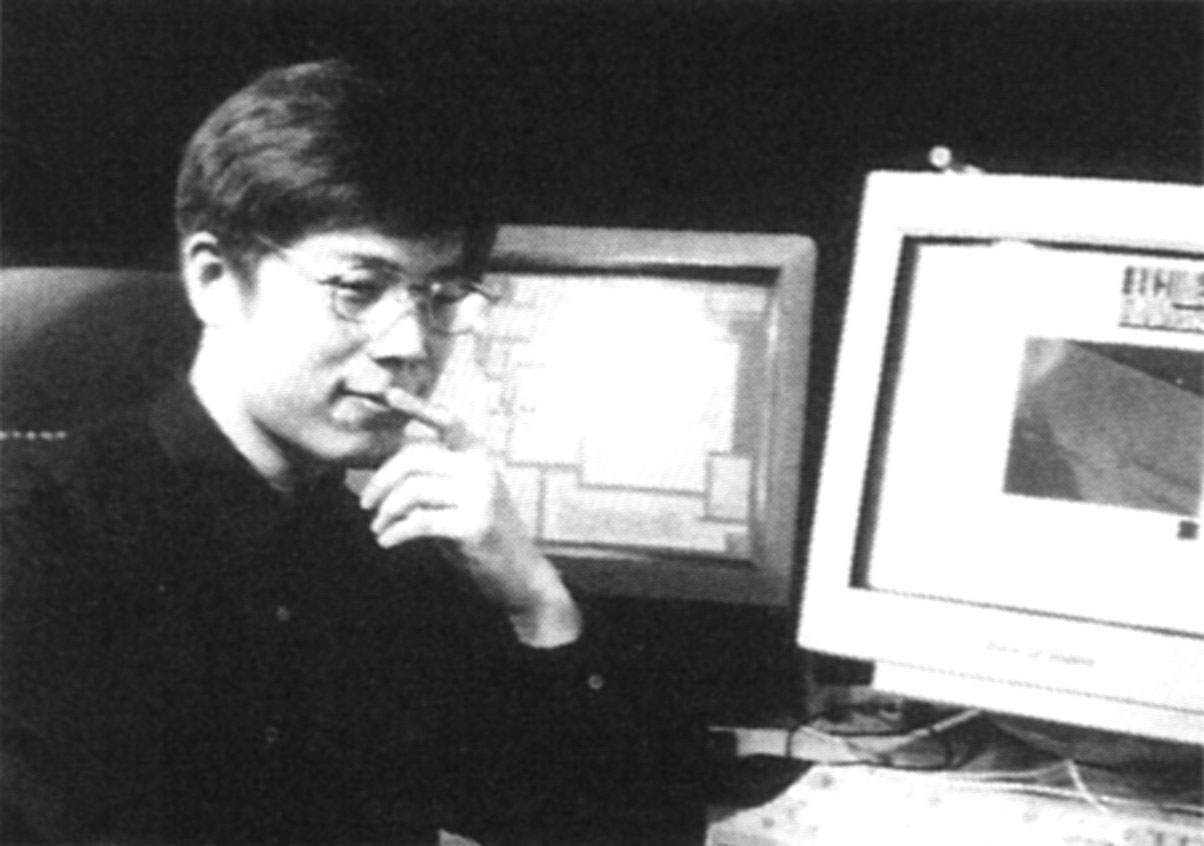


















 |
    |
|
    |
 |
    |
[ Japanese/ English ]    |
 |
|
| Date: | 16:00-18:30, Sep. 18, 2005 |
| Place: | The Holonpia Hall, The Museum of Nature
and Human Activities, Hyogo (called Hyogo ken-ritsu hito to shizen no hakubutsukan: HITOHAKU in Japanese) 6 chome Yayoigaoka, Sanda, Hyogo, 669-1546 JAPAN |
| Fee: | admission-free |
| Sponsored by: | Sanda Media Festival Local Committee |
| Cooperation: | ICEC Local Committee, EC2005 Local Committee |
| Co-relationship: | Kwansei Gakuin University, Team Tsukamoto |
| PA: | Hot Staff |
| Related Event: | International Conference on Entertainment Computing http://ist.ksc.kwansei.ac.jp/ICEC2005/ |


 Program
Program


(intermission)
<ACT I> Wearable Musical Show
<ACT II> Creation
<ACT III> Japanese Elegance and "Space Matrix"


 Players
& Creators
Players
& Creators


 |
Yuichi IsePercussionistYuichi Ise studied percussion with Shin-ichi Ueno, Tomoyuki Okada and Yuko Nakamura at the Kunitachi College of Music. He performs solo and as a member of ensembles and orchestras playing a wide range of music such as classical, contemporary, computer music and improvisational music. He also collaborates with architects, designers, dancers and recordings artists. (e.g., Ryu-ichi Sakamoto's "ZERO LANDMINE" campaign at the TBS 50th Anniversary Special ZERO Landmine "The First Prayer of the 21st Century".) Furthermore, he composes music for percussion ensembles, modern ballet and rhythmic gymnastics. Three CDs of his have been released: (photo by Hiroshi Kiuchi) |
Shu MatsudaComposer / EngineerShu Matsuda was born in Japan in 1974. He studied computer music, composition and computer programming with Takayuki Rai at the Sonology Department, Kunitachi College of Music in Tokyo. As an undergraduate and post graduate student he also studied Max for ISPW and Max/MSP programming with Cort Lippe and Erik Ona. In 1994 he developed a motion detection system called 'Edge'. It was presented at the ICMC 1995 in Banff. In 1997 he started developing DIPS, Digital Image Processing with Sound, a new application that enables real-time image processing in the Max programming environment. His papers about DIPS have been presented several times at the ICMC since 2000 and at several other occasions. Also, his musical work has been selected for performance at the ICMC. In addition to teaching computer music at the Kurashiki Sakuyo University and the Shobi University, he has been doing software engineering for Digital Art Creation in Japan. |
 |
 |
VJ YUTORISVJ YUTORIS is a team of interactive performance formed at 2003, which members are active on visual and music genre. They pursue the concept of extension of visual and auditory senses through live performances with their computer software and devices they developed |
Mizuko OeFashion Designer/Principal of Ueda College of Fashion/ Co-chair of Team Tsukamoto Mizuko Oe started creative activity around fashion education with technology of haute couture such as Christian Dior, Balenciaga and Givenchy. For five years, she has produced haute couture, Pret-a-porteCmore fashion with wearable computing: production of wearable musical show as entertainment, development of fashion products including a computer, a camera and a head-mount display. She is one of exponents who advocate importance of fashion design on wearable computing. |
 |
|
Assistant professor (research associate), Graduate School of
Information Systems University of Electro-Communications
|